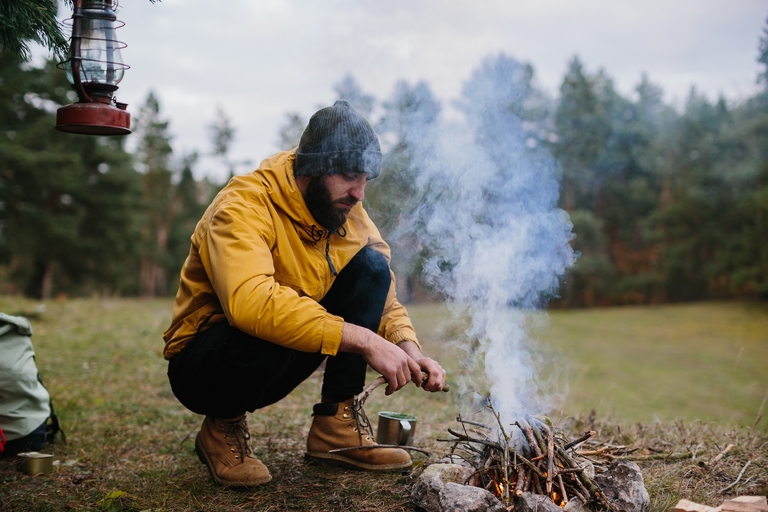Hunting and Trapping Regulations: What to Know Before You Go

Before you pack up and head for the woods, you need to know your local hunting and trapping rules. Every state has its own set of regulations that hunters and trappers must follow. Following state and federal guidelines helps you avoid fines and ensures the long-term viability of the sport.
If you're looking for a rundown on the basics of hunting and trapping regulations, we've got you covered. In this resource, we'll highlight key safety practices and explain why the regulations exist in the first place.

Understanding Hunting and Trapping Regulations
Hunting and trapping laws are entirely dependent on where you live.
Some states allow trapping only during certain seasons, while others limit it to specific species or regions. Check your local wildlife agency's website before you head out.
Before issuing licenses, many areas require hunters and trappers to complete a hunter education or trapper certification course. You'll also need a valid license or special permit to trap different species in most places. Regulations may cover everything from how close you can set a trap to public trails to how often you must check your traps after setting them.
These rules protect animal populations, support conservation efforts, and give everyone a fair shot at trying their hand at trap hunting.
Matching the Trap to the Hunt
Choosing the right trap depends on your target species and your hunting environment.
Here's a quick overview of some different types of hunting traps:
- Foot-Hold Traps: Built to catch an animal's foot without causing significant injury. They're mainly used for predators like coyotes, bobcats, and foxes.
- Body-Gripping Traps: Also known as Conibear traps, these traps are designed for a quick, humane kill of beavers and muskrats.
- Snares: These simple loop traps tighten around furbearers like foxes or raccoons.
- Cage/Live Traps: Capture nuisance animals like raccoons or skunks without injury, allowing for relocation.
If you're not sure which trap is ideal for the animals you're after, check with other local trappers or wildlife agencies in your area.

Legal Considerations for Trapping
After selecting a trap, make sure you’re following the rules that come with it.
Keep these four points in mind:
- Trap Placement Rules: Many states have regulations about how close you can set traps to roads, trails, or water bodies.
- Trap Check Requirements: In most areas, you must check your traps at least once every 24 hours.
- Baiting Restrictions: Certain baits or scents might be banned to protect non-target species.
- Tagged or Registered Traps: Some regions require your traps to have an ID tag or be registered to you.
Knowing these rules helps you trap legally and responsibly while protecting wildlife and your right to hunt and trap.
Ethical Trapping Practices
When you're out in the field, how you trap says everything about who you are as a hunter. Ethical trapping starts with using the right trap for the right animal. Choosing proper equipment minimizes suffering and improves your chances of a clean, humane capture.
After catching an animal, it's essential to dispatch it quickly and humanely. If you accidentally trap an animal you weren't targeting, most states require you to release it unharmed and report the catch to wildlife officials.
Being a good steward of the sport is easy: Respect private land, other outdoor users, and the environment. Trapping is a time-honored sport that deserves your best efforts.

Trap Hunting Safety Tips
Anytime you're working with them, trap hunting safety should be on your mind.
Always wear gloves when setting or handling traps to protect your hands and avoid leaving a human scent that could spook animals.
When setting traps over a large area, mark each location clearly with a GPS app like Huntwise and use physical markers. It's easy to forget where you placed a set, especially after covering a lot of ground.
Be mindful of hikers, hunters, and pets that might wander into your trapping area. Responsible placement and proper signage can prevent unwanted accidents and keep everyone safe.
Finally, after processing any trapped animals, dispose of the remains properly. Leaving carcasses out can attract scavengers and give other outdoorsmen and women the wrong idea about hunters and trappers.
Licensing and Permit Requirements
Most states require a license or permit when trapping or hunting. You may need a general hunting license, a separate trapping permit, or tags for specific species like bobcats or otters. For example, the laws in my state require you to have a CITES tag for those two species if you plan on taking multiple pelts.
There's usually a difference between resident and non-resident fees, and special permits might be necessary for hunting or trapping in designated wildlife areas. Some states also require trappers to submit an annual harvest report to help monitor animal populations.
Researching and securing the proper permits ensures you follow the law and support the essential conservation work we shoulder as hunters and trappers.

Hunter-Ed Helps You Stay Safe When Trap Hunting
Being great at trapping means understanding different hunting traps, respecting state and federal hunting and trapping regulations, and practicing ethical habits every time you go after game.
Know the rules in your area and take the time to plan safe and responsible trapping strategies. Then, before heading out to set your traps, take an online hunter safety course through Hunter-Ed. It's the best way to get started if you're serious about leveling up your hunting and trapping.
Plus, most states require hunters and trappers to pass a hunter education course before getting a license for hunting or trapping.
Choose the course for your state and learn how to stay safe when trapping this season!






